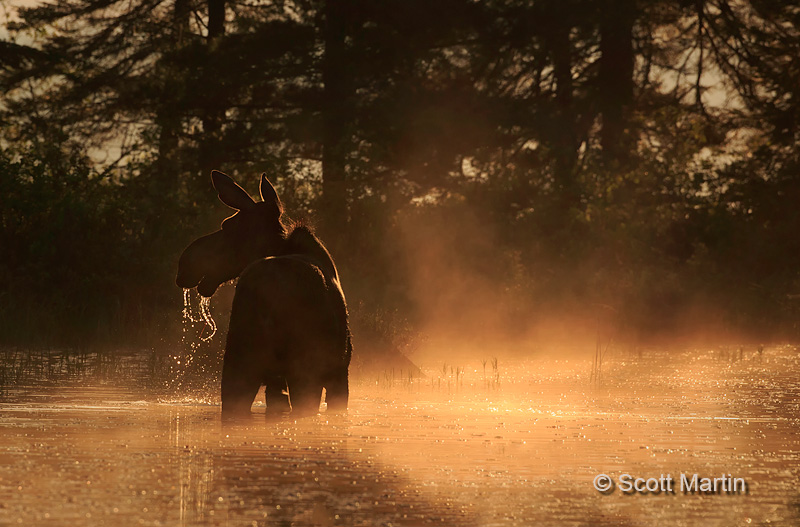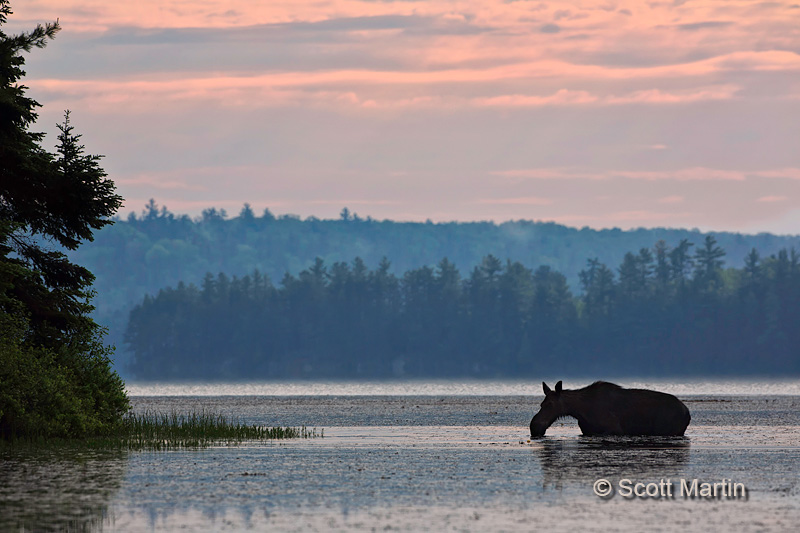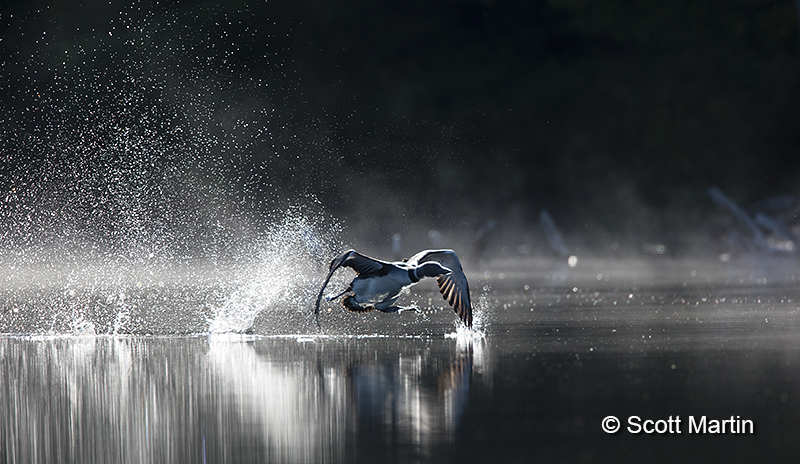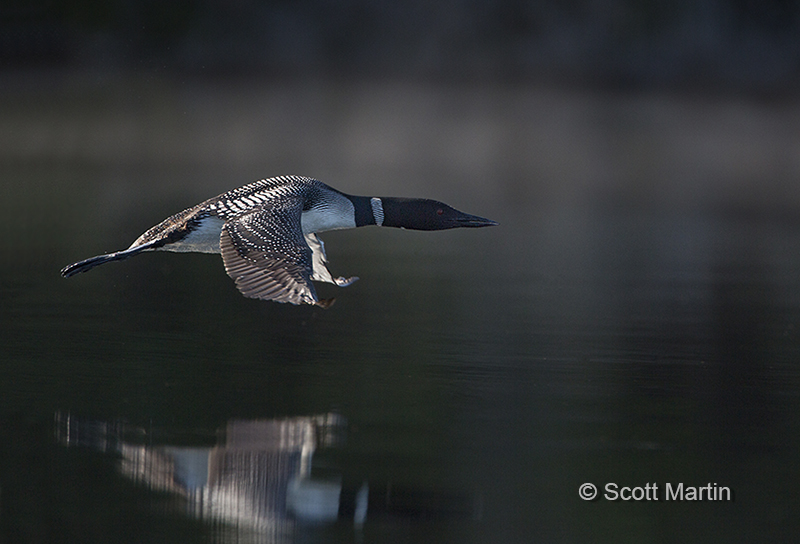Time seems to be conspiring to pass more quickly this time of year and as a result it has been far too long since the last blog post. In order to get something posted, this will be a short blog however the hope is that it will whet your appetite for more Moose & Loons in the upcoming weeks.
Last month I had the privilege of joining my good friends Arni, Eleanor and Joyce in Algonquin Park for three days of photography, during two of which we participated in a Moose Photography Workshop with Michael Bertelsen who owns and operates Algonquin Park Photography Tours & Workshops. I had met Michael a couple of years ago at Hall’s Road in Ajax, Ontario where we were photographing birds and it was a pleasure to catch up with him again. Michael has been conducting tours in Algonquin Park for some fifteen years now and his familiarity with the park and expertise and knowledge of Moose was indispensable, not to mention his customized ‘photography boat’ which featured four swivel chairs and lots of room to shoot from any direction while on the boat. We left the dock at 5:00 a.m. and headed for an 18km ride to where the Moose could be found…..and Moose we found; about twenty of them over the two days!
The purpose of this blog is not to show all the best Moose images (that will come) but rather just a couple that were taken very near sunrise. The importance of being ‘on location’ before the sun rises can not be over estimated. There are a scant few moments while the sun peeks above the horizon that provide photographic opportunities like none other. It is also a time you can shoot into the sun and achieve interesting effects with back and rim lighting.
This first image is a good example of the rim lighting effect possible when shooting into the early morning sun.

Although compositionally you may wish the Moose was on the other side of the frame so she was looking into the frame rather than out of it; the mist coming off the water, the rim lighting around the head and through the water drops makes for a good image. From a technical perspective, it is important to underexpose the exposure suggested by your camera’s light meter when shooting into the sun. If you don’t, the camera will expose for the predominantly dark scene resulting in over exposure of the light areas which would destroy the rim effect and blow out the detail in the lighter parts of the scene (in this case the water drops and the mist). If memory serves me well, this shot was taken at two stops less than what the meter was suggesting.
The next image is what we often refer to as an environmental shot, meaning that although the Moose is the object within the image, it shows the Moose in its natural environment which is always important, and nice, to see. Unfortunately, my tendency is to dwell so much on the object of the photo shoot that I completely forget about the environment and consequently come home with many gigs of images that all look the same, with the object filling the full frame. Often environmental images make for the highest visual impact and therefore become the best images from an outing.

As the sun moves higher into the sky through the morning hours, the light becomes more intense and harsh, which is why most photographers do not go out after mid-morning or before mid-afternoon. Shooting into the sun becomes much more difficult to do effectively as the light intensity fluctuation between the lights and the shadows becomes extreme. This past Friday morning my wife and I were canoeing in Algonquin Park and photographing Common Loons. While were just finishing up for the morning with a pair of Loons, Deb heard the unmistakable sound of a Loon taking off. Fortunately it was heading in our direction but unfortunately we were looking almost directly into the sun. I quickly grabbed my other camera body with a longer lens and was able to get a couple of unexpected frames as the Loon completed its long take off and flew right beside us on its way to a better fishing location.

You can see how much harsher the light becomes later in the morning, in this case around 8:00 a.m. For this sequence, I exposed three or more stops less than what the meter was suggesting. It was a treat to be so close to an in flight Loon as it passed by our canoe. This next image is a little off level, however if it was leveled some of the reflection of the Loon would be lost and I felt it was more important to include as much of the reflection as possible at the expense of a level horizon!

The interesting thing about all four images posted today is that were all taken from the water, which means a little more planning is required to make it all happen, but the results are well worth the effort.


Beautiful images. Thank you for the blog. I was in Algonquin this weekend, didn’t get lucky at all. Saw a big Coyote, but missed the shot as I had my camera on long exposure settings for photographing the night sky.
Thanks Aruna and sorry that you missed the Coyote….now you will have to go back and get him the next time! Algonquin is the perfect spot for night sky photography.
Terrific images Scott. I am envious of your rim lit shot since I missed out on that one, perhaps if I had read your blog first 😉 now the pressure is on to post my images too! The Loon shots are also exceptional and good examples of being ready for anything.
Thanks Arni and I’m looking forward to our parallel Moose blog posts…..but I know mine will not include any Kingfishers 🙂
Another great set of images Scott. 1 & 3 are my favorites here. Lighting in the first is just beautiful. Love the motion in the third shot. You & Deb worked perfectly together here. Awesome Mate!
Thanks Rob and yes we had a wonderful time out on the lake following the Loons. They are an incredible bird to watch.